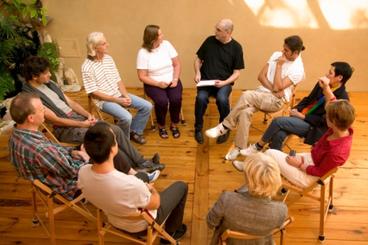We all need a way to resolve conflict constructively. At a time when conflict has become increasingly polarized and dysfunctional, restorative dialogue provides a respectful and effective process to address conflict.
As such, restorative dialogue is a key component of whole systems healing, because we can’t bring about change without an effective strategy for resolving conflict and building relationships.
How Does it Work?
Restorative dialogue uses a mindfulness-based approach to conflict that is grounded in open hearted, moment-by-moment, non-judgmental awareness. It creates a safe place in which the people involved in a conflict can listen deeply to each other’s story and perception of the conflict, without attempting to persuade the other. The goal is to humanize the conflict and repair the emotional or physical harm to the greatest extent possible.
Restorative Dialogue in Action
One application of restorative dialogue brings crime victims and offenders together. For example, family members of homicide victims often desire to meet the person who killed their loved one as part of their search for meaning and healing. Restorative dialogue programs in North America, Europe, Israel/Palestine, South Africa, and other parts of the world offer a safe way for families who have suffered from criminal or political violence to do this. One mother wrote after the meeting: “Before, he was just, you know, a murderer. After much preparation, I met with him for several hours and realized he was still a human being despite having killed my precious daughter.”
The convicted murderer who was in prison wrote after meeting the mother: "I was surprised by her compassion, even though I killed her daughter... The God I know is a God of mercy, love, and forgiveness, and that night I met all those things in her."
Where Is It Used?

Restorative dialogue can be used with small and large groups and amongst strangers or with people who know each other well, even families. It is often used in the criminal justice system with victim/offender mediation, community conferencing, or the circle process. This use is known as restorative justice. Restorative dialogue, particularly the circle process, is also often used in schools, faith communities, workplaces, and peacebuilding initiatives.